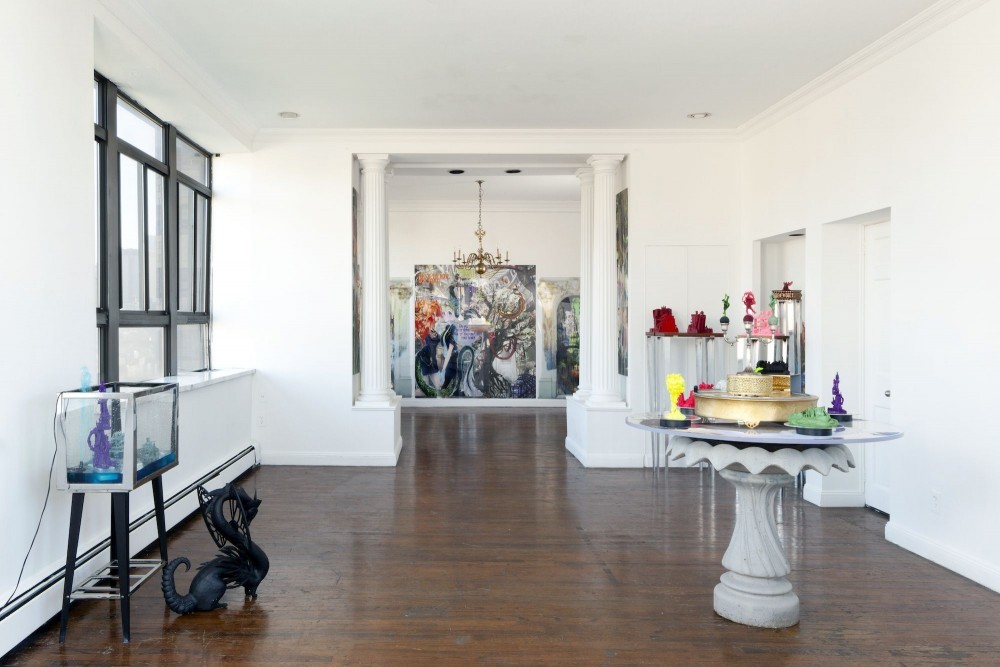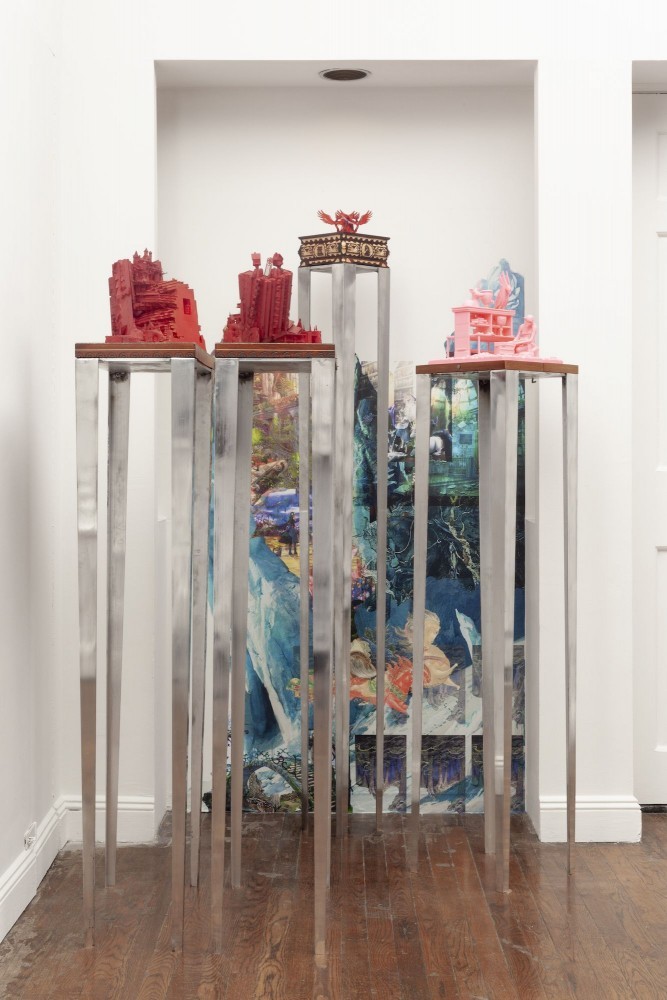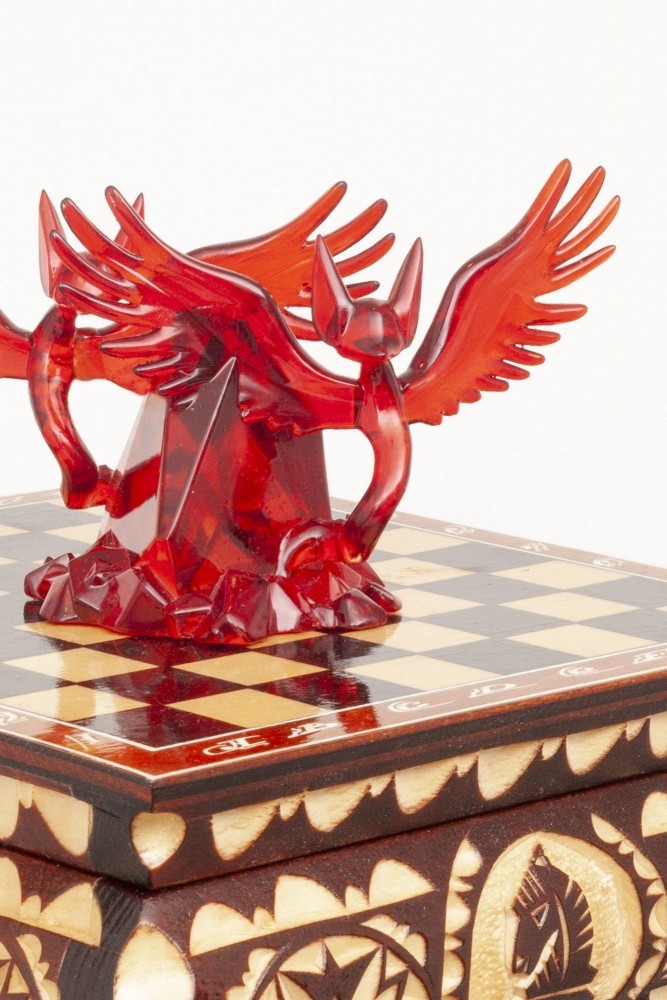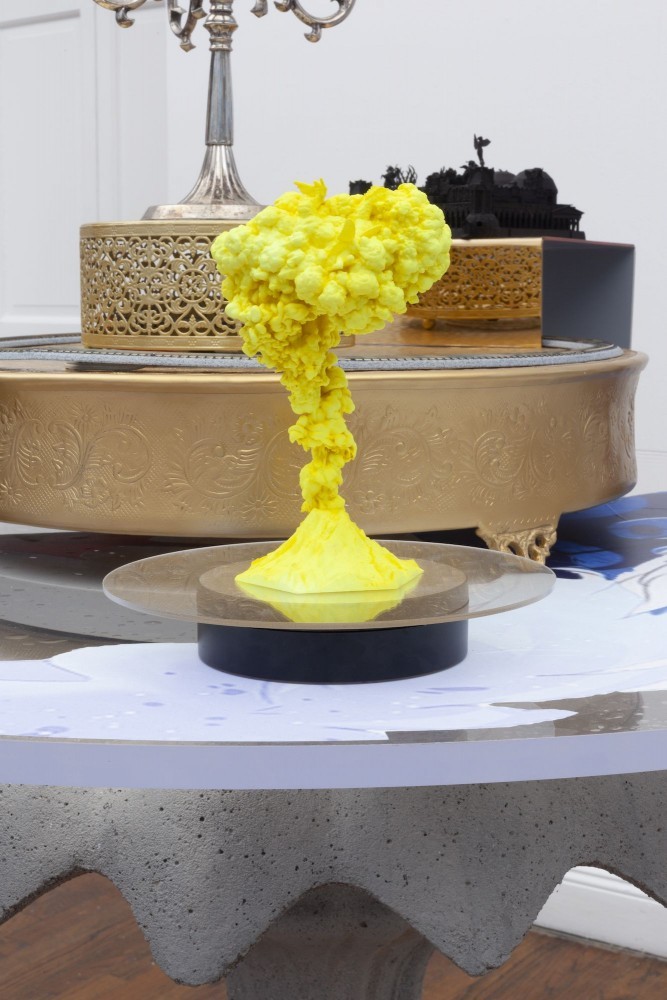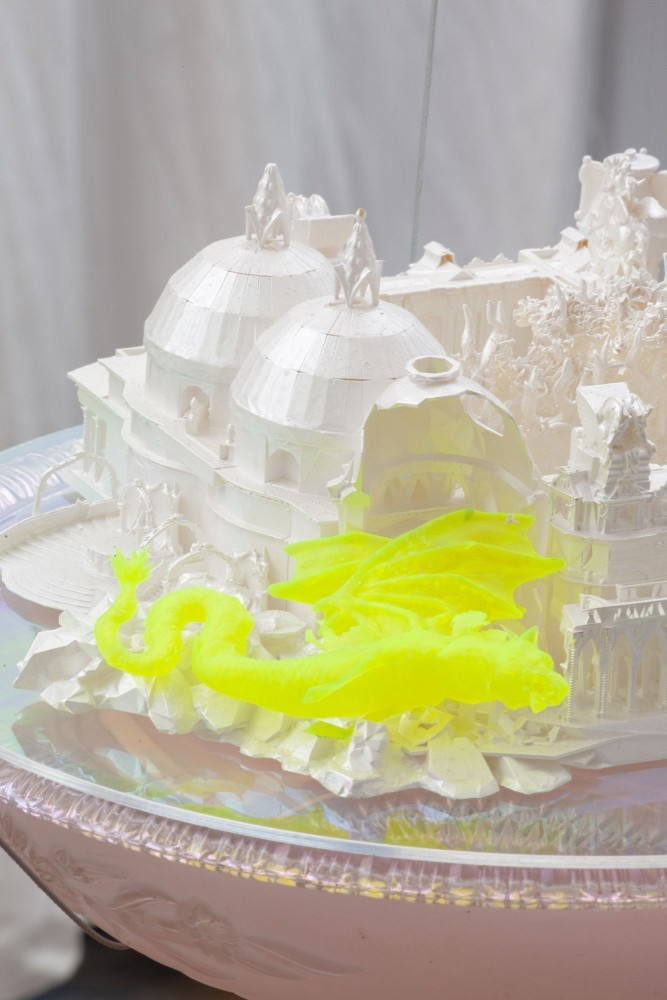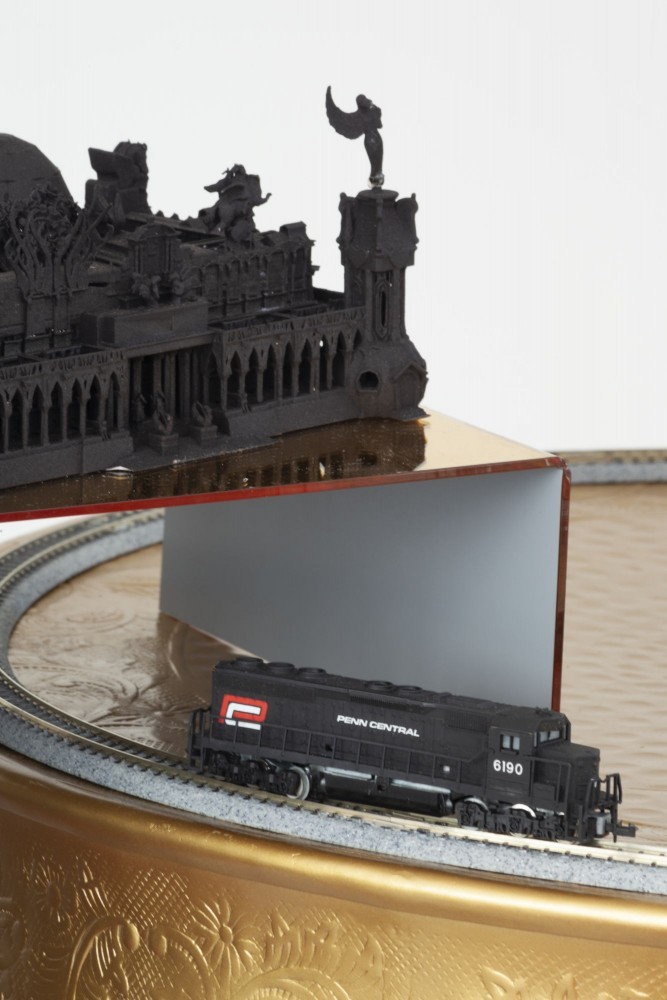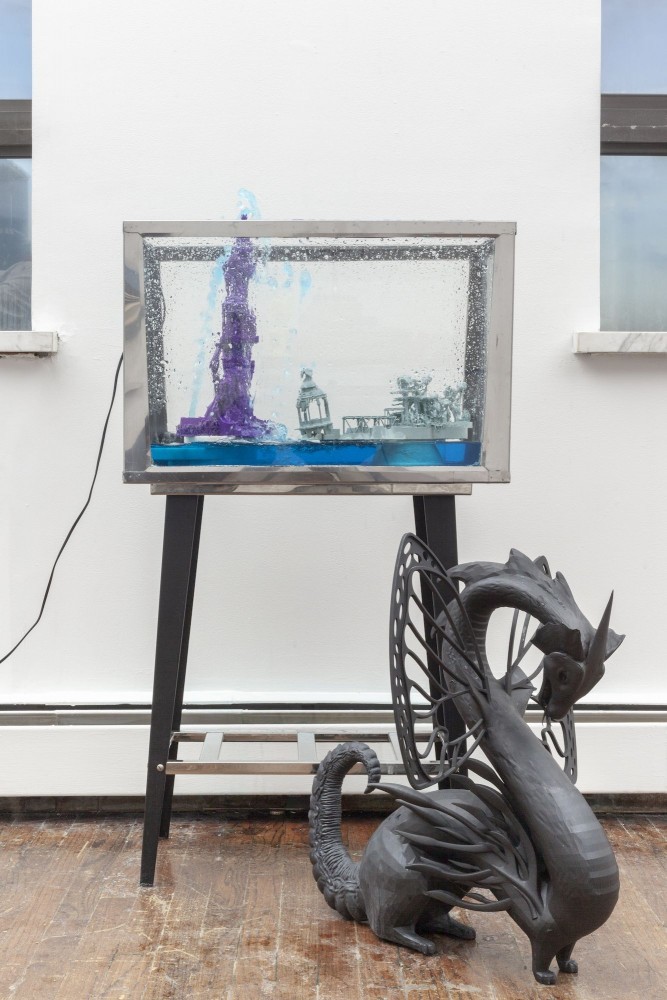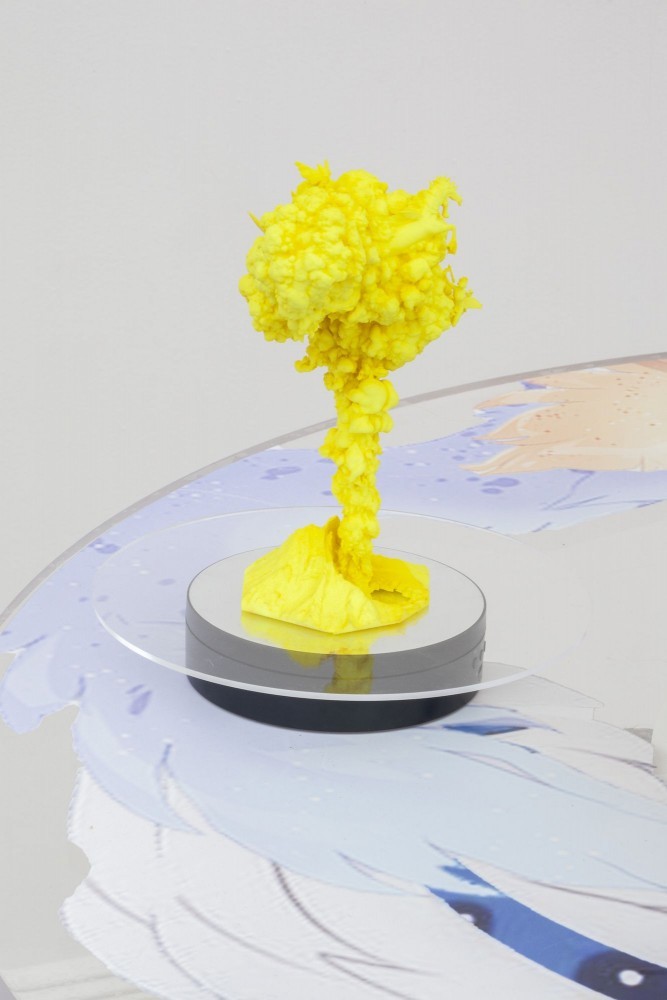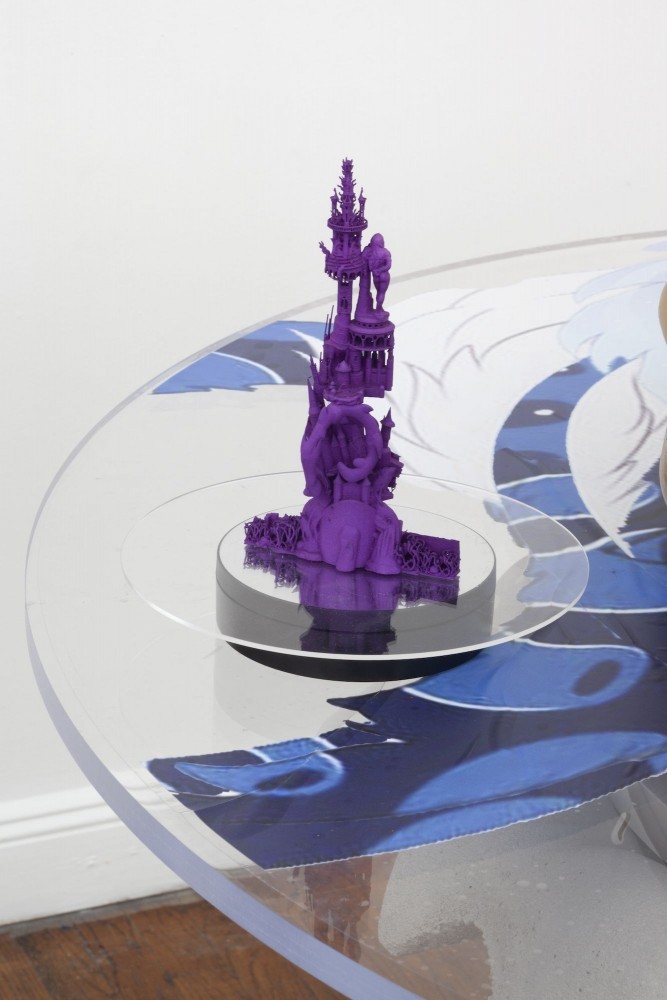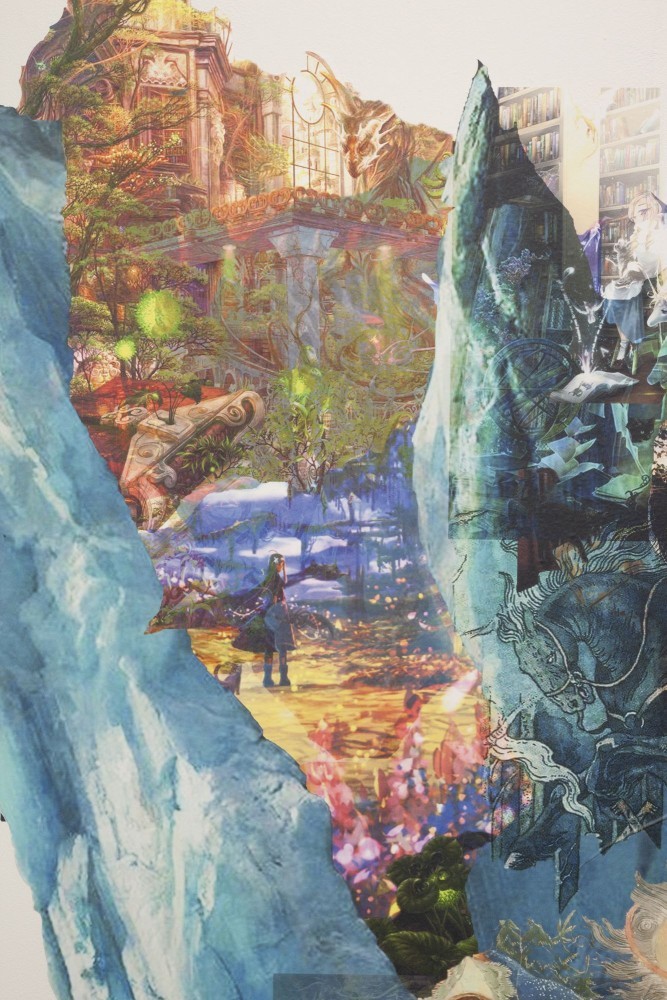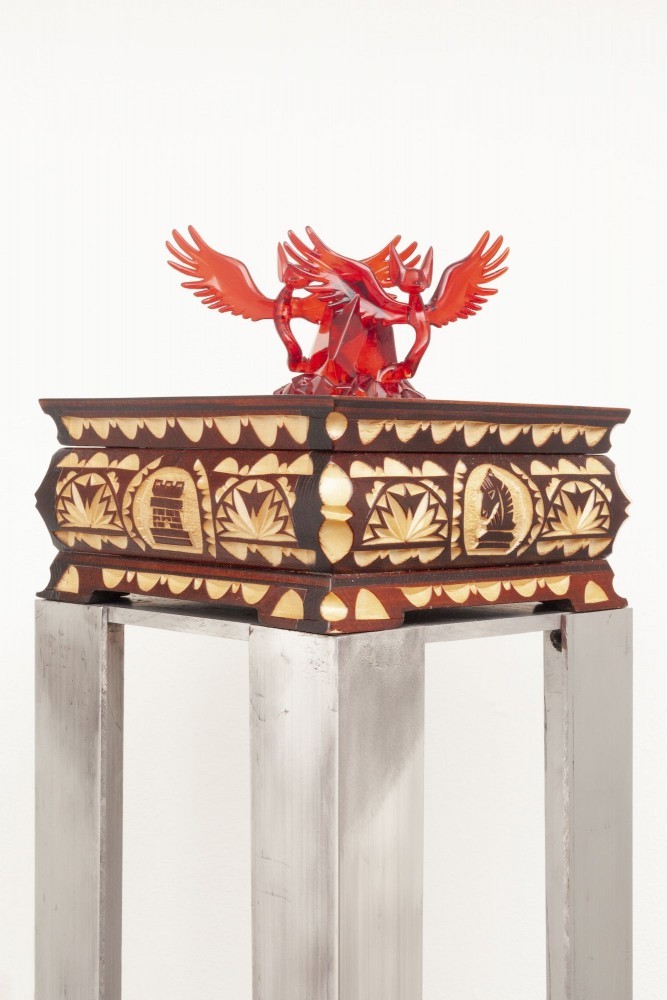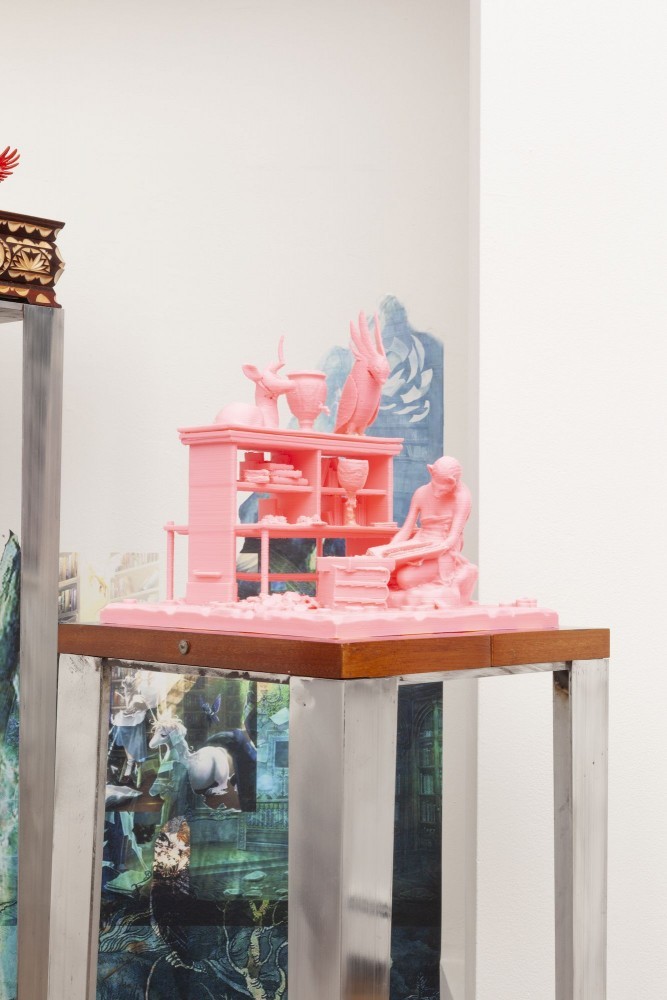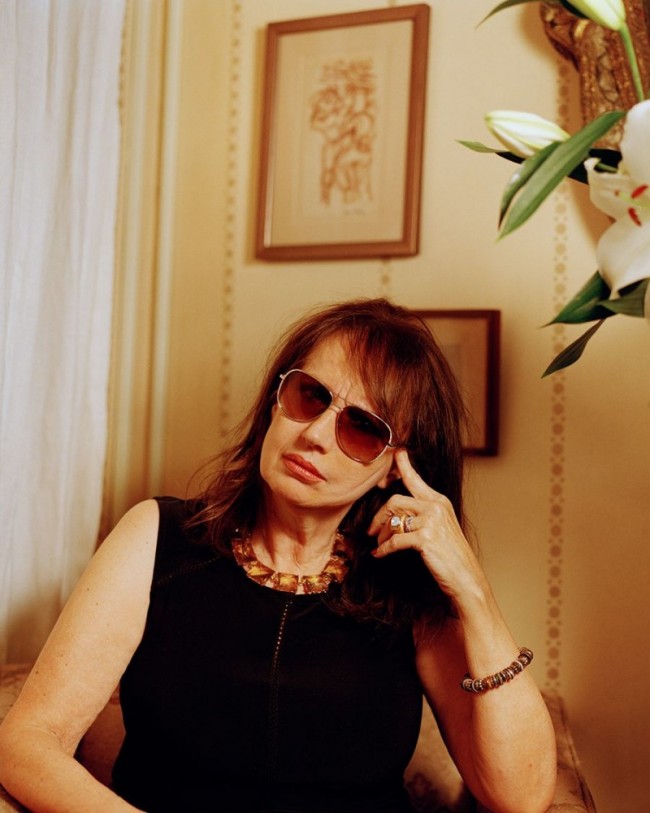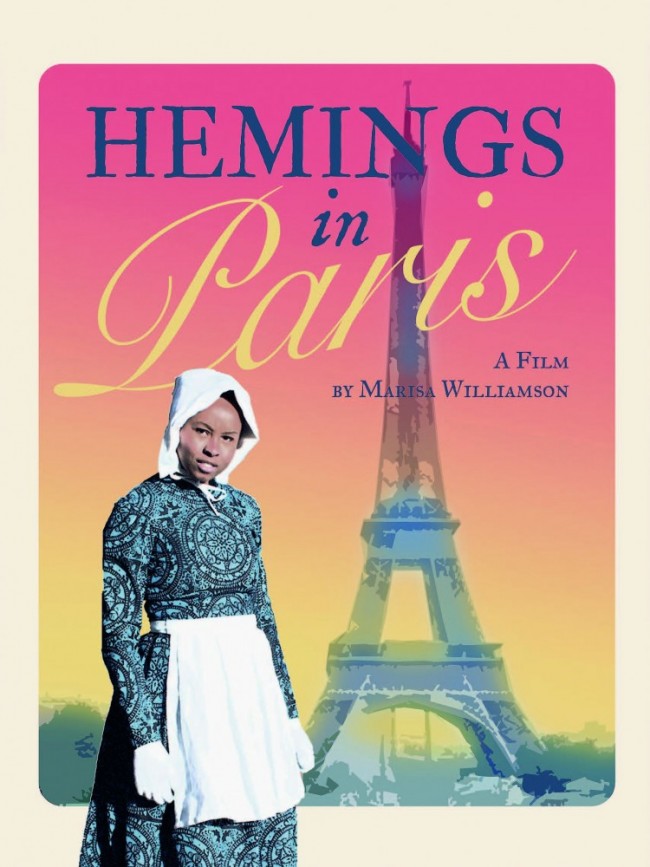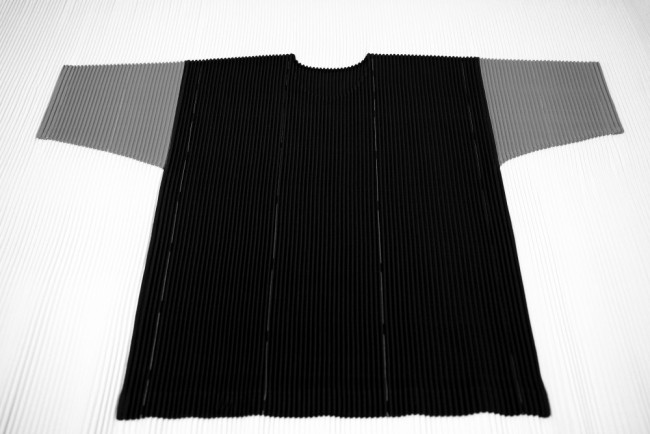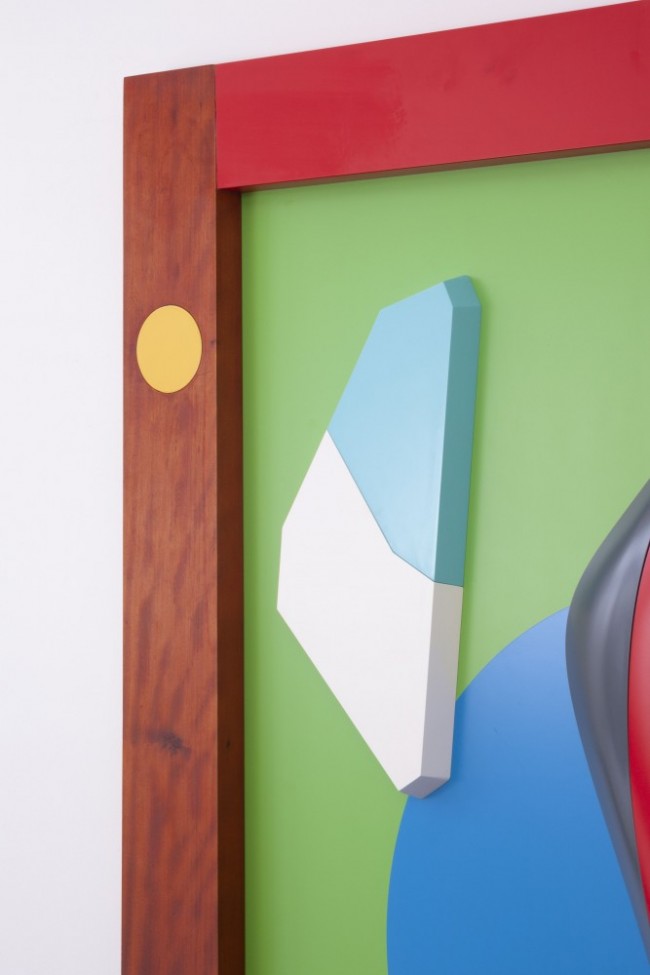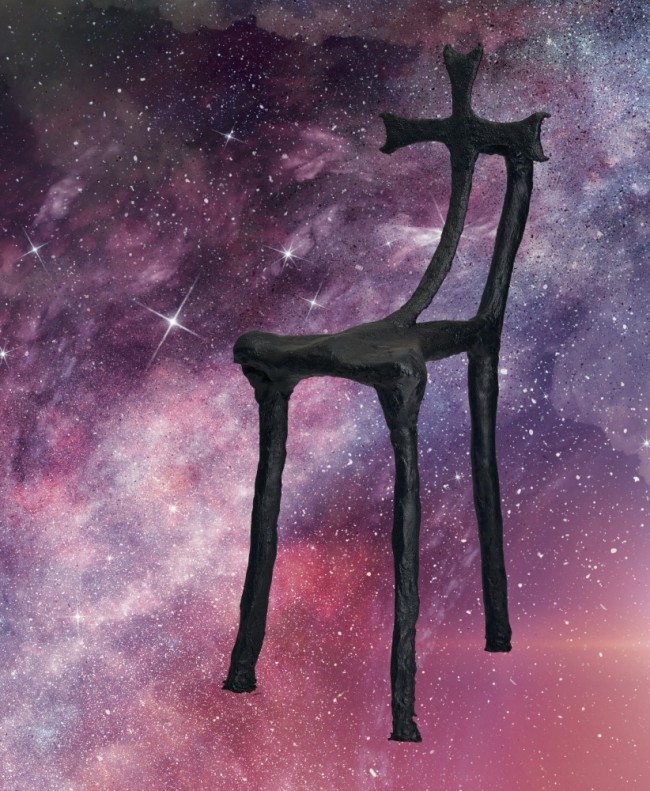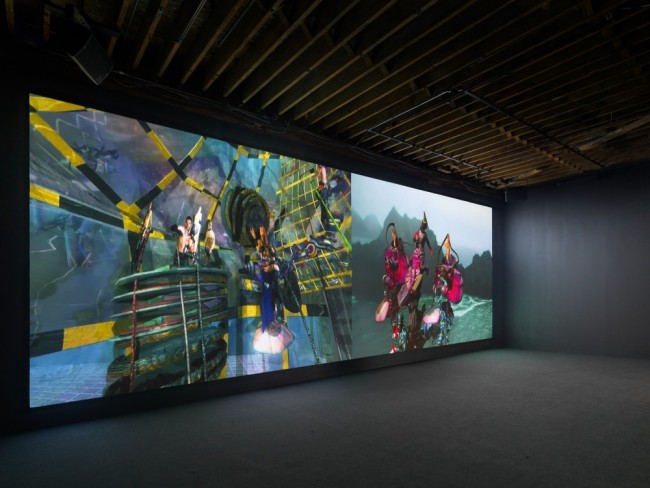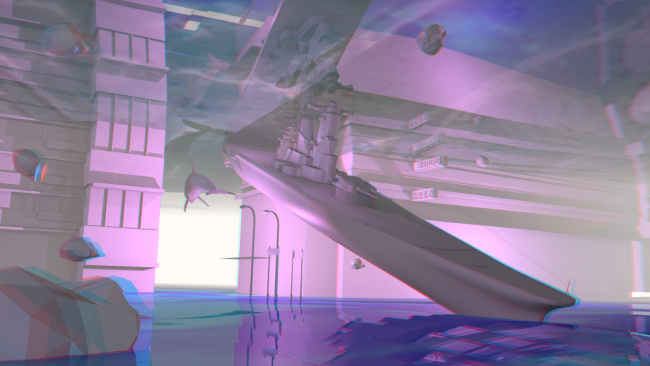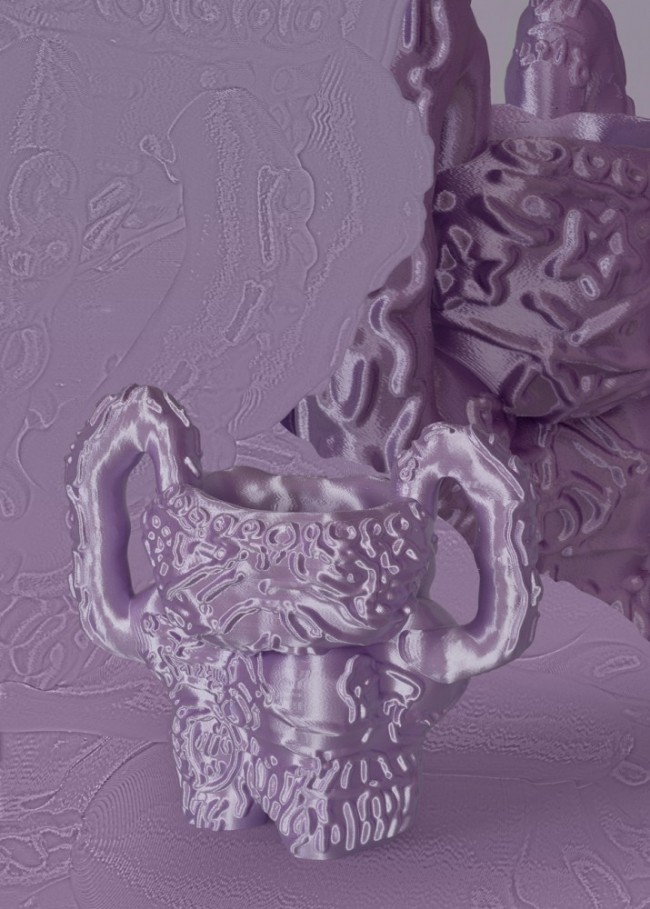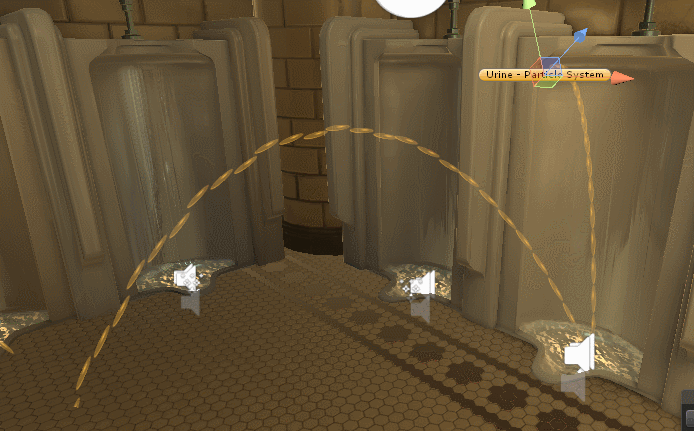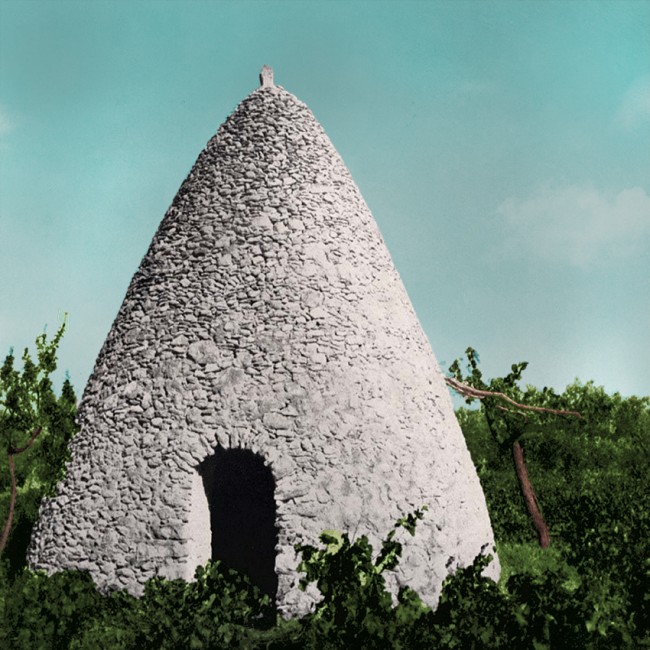Artist Genevieve Goffman Makes Fantasy Architectural Models To Explore History’s Complexities
Genevieve Goffman’s first solo show Here Forever at Alyssa Davis Gallery in New York’s Greenwich Village is a curious mixture of fantasy, architecture, and Internet aesthetics that ultimately provokes new ways of understanding historical events and the objects we understand them through. Upon entering the 11th floor gallery, we are greeted by a floating Penn Station. The Station After (Pearl) is a painted resin 3D-printed model of the original Beaux Arts building famously demolished in 1968 to make way for Madison Square Garden.
-
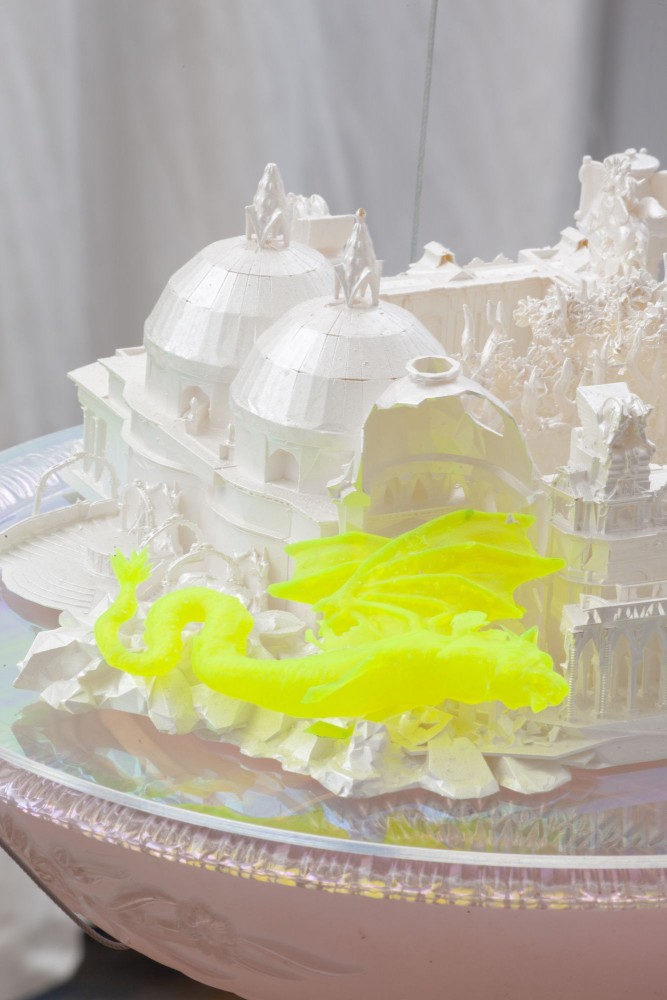
Detail of The Station Manager is a Chimera, 2020.
-

The Station After (Pearl) (foreground) and The Station Manager is a Chimera (background), both 2020.
The Station After, however, tells a different story. This “Penn-Station-in-fairy-land” shows an alternate tale of destruction: A dragon rises from a nuclear cloud in the crumbling station, and an accompanying tryptic, The Station Manager is a Chimera, uses the language of Penn’s pilasters and arches to create an imaginary “deco-punk” version of the historic building. Here, two cute anime girls invite us in, “Do you have your ticket Anon? Hurry! You can’t miss your train,” the giant, meme-like collage on the wall exclaims.
The figure of the train in these works is partly about a journey through the signs and symbols we use to construct our online selves, but as a loaded historical image, it carries complexities. Do you see the romance of scenic mountain rides or lovers saying goodbye on the platform? Or do you see the march of progress: Manifest Destiny, colonialism, and Jews being taken away to camps? This ambiguity pervades all five vignettes, or “stations” in the show and highlights the paradoxes and ambiguities we miss when we oversimplify history as a packaged, linear narrative.

The Station Manager is a Chimera, 2020: Vinyl, Acrylic.
Architectural imagery — found and self-built digital architectural models — is deployed as a living marker of historical moments, like in Aldo Rossi’s layered city; one to be collaged over time a series of forms that give shape to political decisions. However, rather than fixed meanings, as might be found in historicist “Post-modern” architecture, Goffman’s work shares more in common with Rossi, who claims in Architecture of the City, “The form of the city is always the form of a particular time of the city; but there are many times in the formation of the city, and a city may change its face even in the course of one man’s life, its original references ceasing to exist.”
In addition to these slippery historical readings, political narratives are constantly re-cast onto architecture to further complicate the stability of the architectural image. In The Winter Commune, 3D models of collapsing Soviet apartment blocks in Eastern Europe represent the technological and geopolitical machinations that produced 20th-century Soviet housing. The fractured façades embody not only a living history of failed collective utopia, but also the hopes and dreams of individual citizens. As Goffman explains, “It could be anyone, or everyone. The sameness of design was the point.”
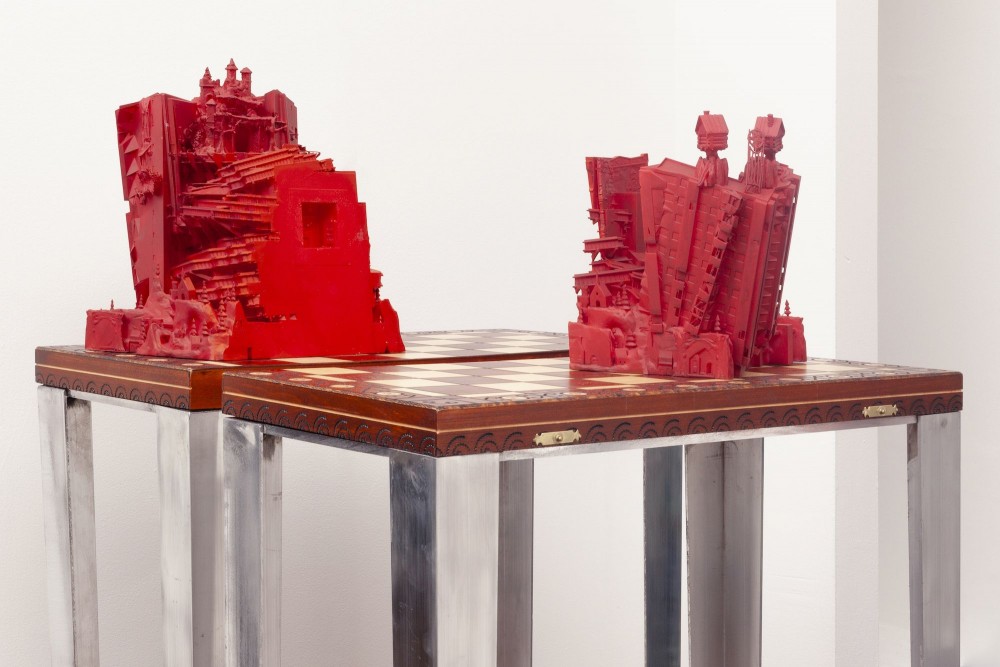
The Winter Commune (City Split, Half 1) and The Winter Commune (City Split, Half 2), both 2020.
In The Winter Commune, the compact, 3D-printed image of the architectural object becomes bound up with extremely complex processes and narratives, such as competing housing policies or the Cold War. Of course, history is never neutral. The pink buildings are presented on a chess board, reminding us of the operative nature of the architectures before us: these buildings are the pawns in the Cold War, an information war. “This to me references how our interpretation of that time period and geographical region from the American perspective is often clouded by our inability to address the material without ideological basis,” Goffman notes.
Similarly, while we might associate the mushroom clouds of Hiroshima and Nagasaki with nuclear science, Goffman’s narratives highlight the wider-ranging personal consequences of such epochs. The Mining Incident, a 3D-printed mushroom cloud with dragons embedded, stands on a uranium glass cake plate, a quotidian domestic item that glows green due to added radioactive material. Popular around the turn of the 20th century, uranium glass often caused those producing or handling it to fall ill from exposure to toxins, a metaphor for the ways in which things affect not just those at “ground zero,” but also those at points of extraction or consumption. The personal is political.
-

The Mining Incident (Yellow Edition), 2020: Nylon, Dye.
-

The Mining Incident (Magenta), 2020: Steel, Uranium Glass, Blacklight, Resin, Acrylic Paint.
In contemporary Internet terms, we might call this lore: an integral part of worldbuilding, factitious blends of truth and fiction that provide the narrative background for fantasy storytelling, giving fabricated rationale to the plot, narrative, and details.
Lore is essential to role-playing games, whose language of adventure pervades the works. The interpersonal relationships that storify the lives of the players function similarly to how capital “H” history is constructed online. Traditionalist history accounts like Bronze Age Pervert and Traditional Western Architecture post images that, according to Goffman, show an “idealized and contorted visions of the past. Countless Twitter accounts catalog this type of historical fetishism, from Rome to pre-Christian Europe to early 19th-century monarchists.” Both role-playing enthusiasts and trad architecture buffs spend years perfecting their personal knowledge of their subject matter.
-

Installation view of Genevieve Goffman, Here Forever at Alyssa Davis Gallery, New York.
-

Installation view of Genevieve Goffman, Here Forever at Alyssa Davis Gallery, New York.
-

The Station After (Pearl) (foreground) and (background left to right) Platform to Babylon, The Station Manager is a Chimera, Platform to Victory, all 2020.
-

Monument to a Hot Dead King (Waterfall), 2020: Water, Fish Tank, Spout, Blue Food Dye, Marble, PLA, Resin, Acrylic, Paint.
For architect Arata Isozaki, history was personal, but also abstract, vulnerable, and ephemeral. Isozaki witnessed the destruction of the atomic bomb firsthand. “(During WWII) I was constantly confronted with the destruction and elimination of the physical objects that surrounded me. Japanese cities went up in flames. Forms that had been there an instant earlier vanished in the next.” Isozaki, coming to terms with his support of the technological positivism of Metabolism, fell into a dark despair, realizing during a hospital stay that “space equals darkness, time equals termination (eschatology), and matter, or architecture and cities, equals ruin and ashes.”
Goffman’s miniatures capture this essence of art’s imperfect ability to give form to ideology. The open-endedness of the narratives embedded in the frozen moments of Here Forever give them qualities of hyperobjects, or those things too big and complex and to be fully grasped, such as the “Cold War” or “nuclear science.” In the end, they are reminders of the impossibility of ever truly representing or knowing that which we call “history.”
Text by Matt Shaw.
Images courtesy Alyssa Davis Gallery.
Here Forever was on view at Alyssa Davis Gallery from October 3rd until November 21st, 2020.

